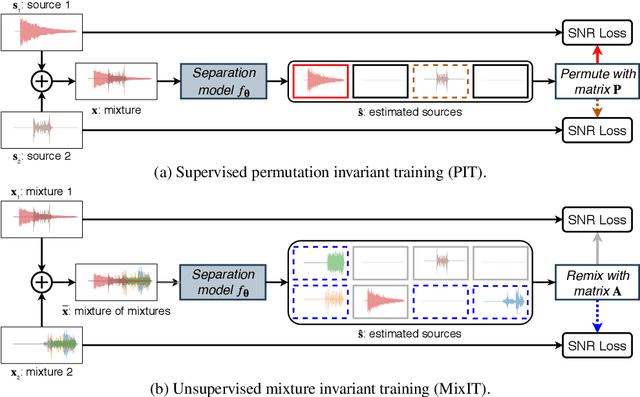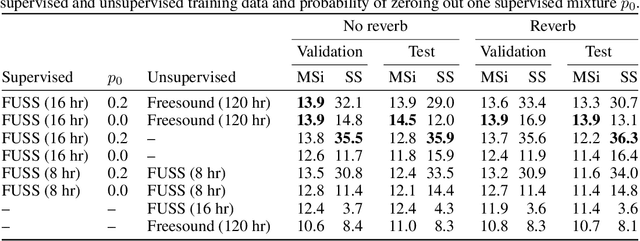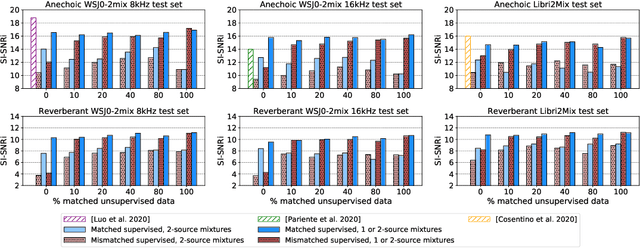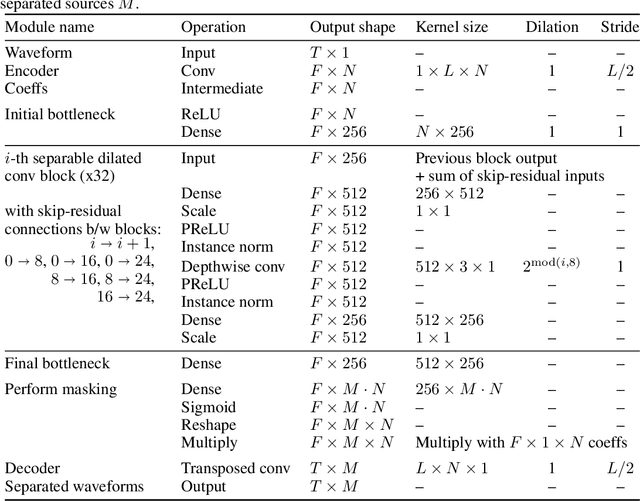Unsupervised Sound Separation Using Mixtures of Mixtures
Paper and Code
Jun 23, 2020



In recent years, rapid progress has been made on the problem of single-channel sound separation using supervised training of deep neural networks. In such supervised approaches, the model is trained to predict the component sources from synthetic mixtures created by adding up isolated ground-truth sources. The reliance on this synthetic training data is problematic because good performance depends upon the degree of match between the training data and real-world audio, especially in terms of the acoustic conditions and distribution of sources. The acoustic properties can be challenging to accurately simulate, and the distribution of sound types may be hard to replicate. In this paper, we propose a completely unsupervised method, mixture invariant training (MixIT), that requires only single-channel acoustic mixtures. In MixIT, training examples are constructed by mixing together existing mixtures, and the model separates them into a variable number of latent sources, such that the separated sources can be remixed to approximate the original mixtures. We show that MixIT can achieve competitive performance compared to supervised methods on speech separation. Using MixIT in a semi-supervised learning setting enables unsupervised domain adaptation and learning from large amounts of real-world data without ground-truth source waveforms. In particular, we significantly improve reverberant speech separation performance by incorporating reverberant mixtures, train a speech enhancement system from noisy mixtures, and improve universal sound separation by incorporating a large amount of in-the-wild data.
 Add to Chrome
Add to Chrome Add to Firefox
Add to Firefox Add to Edge
Add to Edge